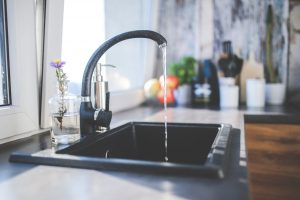Do It Yourself- Plumbing

Plumbing follows the fundamental laws of nature; gravity, pressure and water seeking its level. Keeping this in mind, you can understand its “puzzles” and also make heaps of repairs for your house’s plumbing system. You may save yourself time, trouble, and money!
The plumbing in your residence are made up of two distinct subsystems. One subsystem brings freshwater, and another takes wastewater out. The water that comes to your house is due to pressure. It enters your house under sufficient pressure to let it travel upstairs, around corners, or where else it is needed. As water comes in your house, it moves through a meter which registers the quantity you use. The primary water shutoff or end valve is situated near the meter. In a plumbing emergency, it is essential that you quickly close the primary shutoff valve. Otherwise, when a pipe bursts, it may flood your home very quickly. If the crisis is restricted to a sink, bathtub, or bathroom, you need not switch off your whole water supply. Thus, most fixtures ought to possess manual stop valves.
Water from the primary source is instantly ready for your chilly water requirements. The hot water source, however, requires a different measure. One pipe carries water out of the cold water system for your water heater. In the heater, hot water moves the heated water to all of the fittings and appliances which need hot water. A thermostat in the heater maintains the temperature that you choose by turning the device’s heating components off and on as required. The standard temperature setting for a house water heater is located between 140 degrees F and 160 degrees F, but 120 degrees F is adequate and can also be cheaper. Some automatic dishwashers demand higher temperature water, even though a lot of them have a water heater inside them that fosters the warmth yet another 20 degrees F.
Drainage Systems
Whether your house is on a septic or sewer system, the systems inside your home are basically the same. Drainage systems don’t depend on pressure as distribution systems do. Instead, waste leaves your home through the drainage pipes pitch angled downward. Gravity pulls the waste combined. The sewer line proceeds this downward flow into a sewage treatment centre or a septic tank.
Though the machine seems easy, there is more to it, such as ports, traps, and workouts. The vents from the roof of your home permit air to enter the drainpipes. When there is no air distribution coming out of the vents, wastewater won’t flow out correctly, and the water from the traps would have to be siphoned away. This eventually leads to a blocked drain which is seldom faced by most households.
Traps are vital parts of the drainage system. It is possible to observe a trap beneath every sink. It’s the curved or S-shape part of pipe beneath a drain. Water leaks out of the basin with sufficient power to go through the snare and outside throughout the drainpipe. However enough water remains in the trap then to make a seal which prevents sewer gas from backing up in your property. Every fixture needs to have a snare. Toilets are self-trapped and do not need an extra block in the drain. Bathtubs often have drum cubes, not just to make a seal against sewer gas but also to accumulate dirt and hair so as to maintain a clean drain. A few kitchen sinks have grease traps to collect grease which may otherwise cause flaking. Because hair and dirt are usually the root causes of drain clogs, and traps frequently have clean-out plugs that provide you easier access to remove or split any congestion.

Source and Drainage Subsystems
The distribution and drainage subsystems are two different operations, without the overlapping between these. There are bridges between both, but the bridges are precisely what make the plumbing system worth using. In plumbing jargon, some other bridge between the distribution and drainage systems becomes a fixture.
Toilets, sinks, and bathtubs are fittings. Additionally, an outside faucet is a fixture and so is a washing machine. All devices that draw freshwater and release wastewater are fittings and are intended to maintain the drainage and supply systems segregated.
Before you embark upon any plumbing repairs, always switch off the water source to the fixture or the primary shutoff. Additionally, consult the regional plumbing code official prior to add or alter any pipe in your residence. You may learn what’s allowed and what’s illegal and whether a homeowner is permitted to perform their own work. If you receive the green light, you can save yourself a good deal of cash by doing your own repairs.











